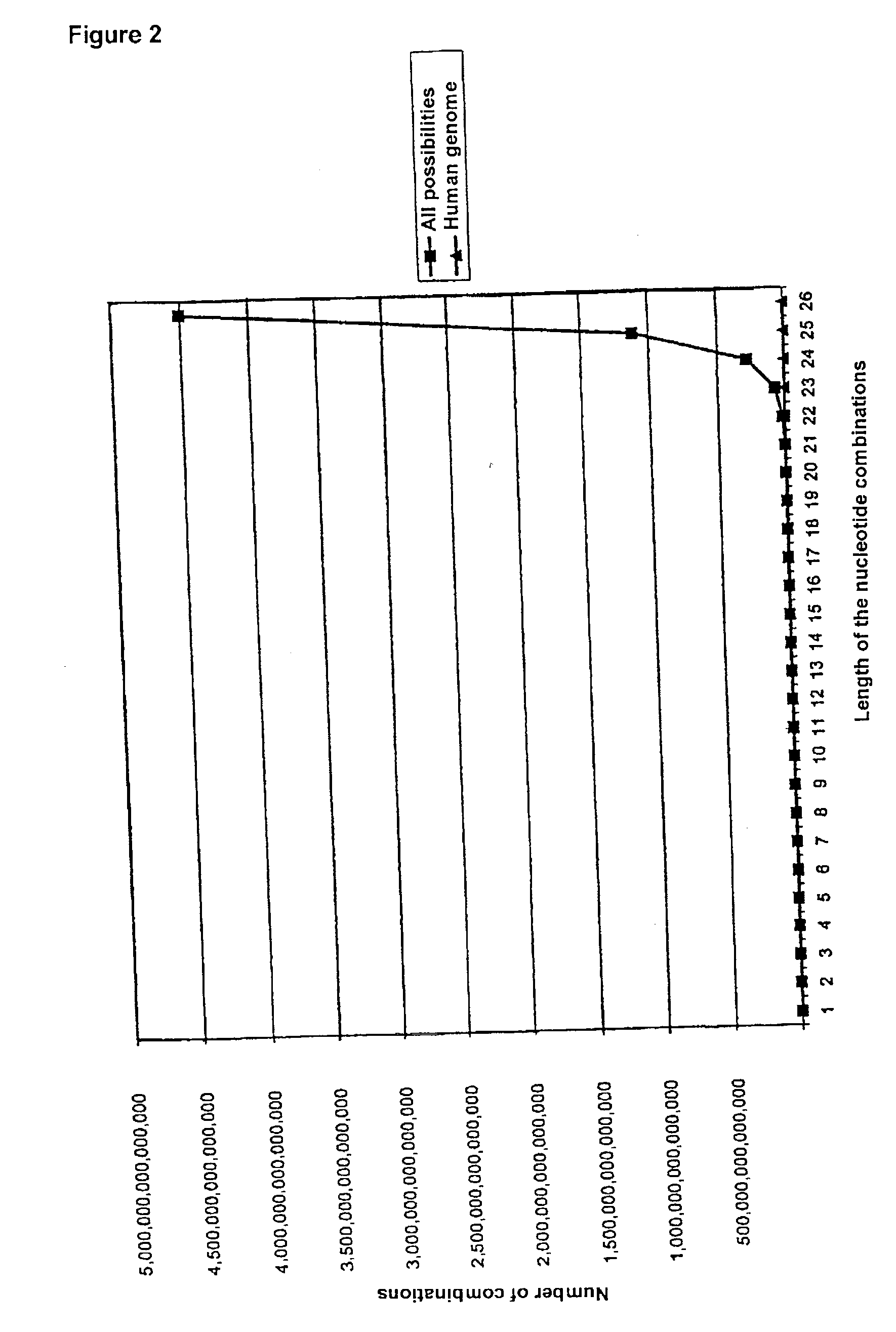Dynamic determination of analytes
a technology of dynamic determination and analytes, applied in the field of dynamic determination of analytes, can solve the problems of low number of possible probes compared with biological diversity, low number of possible probes, and inability to access information, etc., to achieve accurate assignment of analytes in the sample, efficient processing of genetic information, and short time
- Summary
- Abstract
- Description
- Claims
- Application Information
AI Technical Summary
Benefits of technology
Problems solved by technology
Method used
Image
Examples
Embodiment Construction
[0045] 4.1 Numerical Ratios
[0046] In any sequence consisting of m nucleotides it is possible for a maximum of m-n+1 part-sequences of length n to occur. This means that for any complete sequence length m there is a specific sequence length n for which the number of all possible n-mers (4.sup.n) exceeds the number m-n+1 of the possible part-sequences of length n in the complete sequence.
[0047] In the E. coli genome for example, which consists of about 4.6.times.10.sup.6 nucleotides, it is thus possible for a maximum of about 4.6.times.10.sup.6 sequence sections of any length n to occur. If n=12 is chosen, the number of all 12-mers is 4.sup.12=16777216, which is distinctly larger than the maximum number of 12-mers occurring in the E. coli genome. It is thus completely impossible for all 12-mers and therefore also for all longer (n+1)-, (n+2)-mers etc. to occur in this genome.
1TABLE 1 Probabilities (in %) of the occurrence of an n-mer in a sequence of length m n / m 500 1000 10000 50000 ...
PUM
| Property | Measurement | Unit |
|---|---|---|
| threshold | aaaaa | aaaaa |
| temperature | aaaaa | aaaaa |
| lengths | aaaaa | aaaaa |
Abstract
Description
Claims
Application Information
 Login to View More
Login to View More - R&D
- Intellectual Property
- Life Sciences
- Materials
- Tech Scout
- Unparalleled Data Quality
- Higher Quality Content
- 60% Fewer Hallucinations
Browse by: Latest US Patents, China's latest patents, Technical Efficacy Thesaurus, Application Domain, Technology Topic, Popular Technical Reports.
© 2025 PatSnap. All rights reserved.Legal|Privacy policy|Modern Slavery Act Transparency Statement|Sitemap|About US| Contact US: help@patsnap.com


